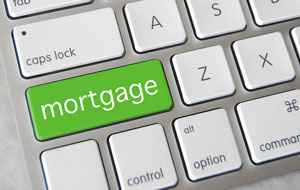
When people think about buying a home and getting a mortgage, they often think about the monthly payment and down payment. But there are more costs involved with buying a home, which homebuyers need to focus on, in addition to the monthly payment and down payment.
Principal and Interest
The biggest expenses with a mortgage are principal and interest, which are typically paid monthly. For specific examples, use our Mortgage Calculator.
Most borrowers pay principal and interest every month, which makes up the largest portion of the monthly payment. During the early years of the mortgage, the majority of the monthly payment is typically made up of interest. Then near the end of the mortgage, the majority of the monthly payment is principal.
So, the quicker borrowers payoff their mortgage, the less they pay in interest.
Property Taxes and Insurance
Besides principal and interest, a typical monthly mortgage payment also includes real estate taxes and insurance.
Most homeowners have the lender add the property taxes to their monthly mortgage payment. The lender holds the money in escrow until the taxes are due, and then pays the taxes on behalf of the homeowner.
Insurance premiums collected by lenders are also held in escrow until paid, and can include property insurance and PMI (private mortgage insurance).
Closing Costs
In addition to the costs associated with the mortgage monthly payment, there are closing costs. These costs are paid at the closing of the real estate transaction. Some of the more common closing costs include:
- Lender Fee
- Appraisal
- Credit Report
- Flood Certificate
- Closing Fee Paid to the Title/Escrow Agent
- Title Insurance
- Title Search
- Miscellaneous Fees for Notaries, Document Preparation, etc.
- Documentary Stamps
- Intangible Taxes
- Fees imposed by Civil Government
Pre-Qualified and Pre-Approved
Before shopping for a home, you can be pre-qualified over the phone in minutes. After being pre-qualified, you should have a good idea of the costs associated with buying a home, and know the amount you can borrow. Then as you shop for a home, you can begin the more lengthy process of being pre-approved for a mortgage.
Not only will you have the benefit of knowing your budget and the approximate costs associated with purchasing a home, Realtors and sellers will take you more serious as a buyer. As a matter of fact, many Realtors will not show property to homebuyers unless they have been pre-qualified for a mortgage.
Use the Lender’s Good Faith Estimate
Lenders are required to give a Good Faith Estimate (GFE) to a borrower within 3 days of completing the loan application.
You can use the GFE to nail down the closing cost a little more. While the numbers on the GFE are considered estimates, they should be very close to the final numbers at closing. The estimated expenses will be grouped by category, some of which cannot change between the date of the GFE and closing date, except under special circumstances, while other fees can only change by 10%. Fees charged in excess of the original estimate, or greater than 10% of the original estimate, may be required to be paid by the lender if they provided an inaccurate estimate.

The Marimark Mortgage Newsletter will keep you informed with important events in the mortgage industry that could impact your finances.
We especially focus on ways to save money on your current and future mortgages. And, we continually share the information we share with our clients, because we believe informed consumers are the best consumers.
Real estate agents, and other professionals in the industry, will receive an ongoing wealth of information that will help them serve their clients.